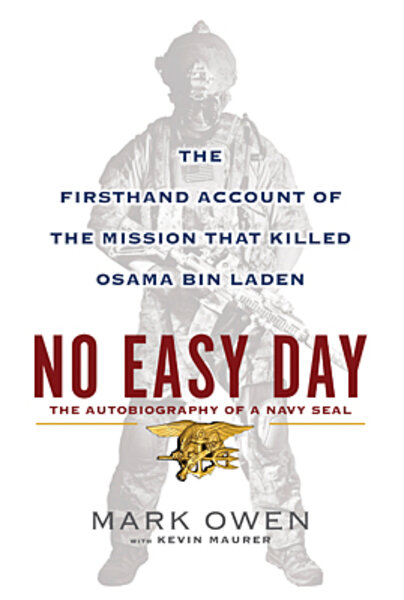Another 'No Easy Day' revelation: dramatic SEAL search for POW
Loading...
| Washington
Army Sgt. Bowe Bergdahl, the only POW from the Afghanistan war, went missing from his fortified base on June 30, 2009, under circumstances that are not entirely clear before being captured by the Taliban.
Sergeant Bergdahl, now thought to be in the hands of a terrorist network, is hardly a household name in America. The Pentagon for its part rarely discusses him, and the US government has been criticized for lack of attention to his case.
In May his mother, Jani Bergdahl, told The New York Times that President Obama “has never contacted us. We haven’t gotten a Hallmark card, we haven’t gotten a note signed by an aide, nothing.”
Now “No Easy Day,” the controversial new book by Matt Bissonnette, a former member of the Navy’s SEAL Team 6 that killed Osama bin Laden, is giving a gripping insider account of the Pentagon’s behind-the-scenes efforts to rescue Bergdahl.
“When an American soldier went missing at the start of the summer,” writes Mr. Bissonnette, who wrote the book under the pen name Mark Owen, “we dropped everything to find him.”
The book sheds light on the issue of POWs, a seldom-discussed topic today, particularly in comparison with the Vietnam War era.
In part, this is because there were far more POWs in Vietnam than in Iraq or Afghanistan, where US troops have largely been confined to heavily-fortified bases.
In 1973, in keeping with the peace accords, Hanoi returned 591 American POWs to the United States. Today, there remain 1,660 US troops who are unaccounted for, according to Department of Defense (DOD) statistics.
Each year, the DOD’s Prisoner of War/Missing Person’s office hosts “family updates” to discuss ongoing efforts to find the US military’s missing with relatives.
Attendance at these events has been growing steadily from 645 in 2001 to 1,161 in 2011.
The meetings offer updates on the 73,681 US troops who are still considered “unaccounted for” from World War II, as well as the nearly 8,000 from the Korean War.
The Pentagon, which says there are six US troops still missing from the First Gulf War to the present, has not commented on reports that Bergdahl may have wandered off his fortified base in Paktika Province, near the border with Pakistan, before being captured.
What is clear is that Sergeant Bergdahl was soon in the hands of Taliban forces that “quickly moved him closer to the border between Pakistan and Afghanistan in hopes of getting him across,” Bissonnette writes.
US intelligence analysts had tracked leads after his disappearance, and the SEALs had launched “several rescue attempts, but came up empty,” he reports. “It was a race to get him back before they smuggled him to Pakistan.”
The fear among US officials, he adds, was that the insurgents who captured him would eventually sell him to a more formidable terrorist group – namely, the Haqqani Network, allied with the Taliban but known for having greater organization and more brutal tactics against US forces.
It appears, in the end, that this is what happened. A spokesman for US Central Command, which runs the war in Afghanistan, told the weekly newspaper Human Events in May that Bergdahl is believed to be held by the Haqqani Network.
“We’re still actively looking for him and following leads whenever we can get them,” spokesman John Wagner said. “The Haqqanis are known for their communications security. They are just very quiet, and we’ve asked that they release him, and let him go back to his family.”
His captors did release five videos between December 2009 and May 2011 featuring Bergdahl.
On an evening just after the first video was released, the SEALs got information that Bergdahl was being held south of Kabul, Bissonnette writes. “We don’t have much intel to go off of,” he reports his troop commander saying as he pointed to a map of central Afghanistan, “but this is a priority.”
Using a small, extendable ladder that he carried on his back for the mission, Bissonnette reports that he launched a grenade in the direction of enemy fighters who were escaping the compound where they believed Bergdahl was being held.
Among the insurgent fighters the SEAL team killed, they found morphine kits and grenades. “They were professionals,” he writes, “not some farmers who picked up AK-47s when the crops weren’t in season.”
Ultimately, the SEALs failed to find Bergdahl during that mission, or during the remainder of their deployment.
“But in my gut, I think he was there at some point,” Bergdahl writes. “We probably missed him by a few hours, or maybe in the fight they were able to escape.”





